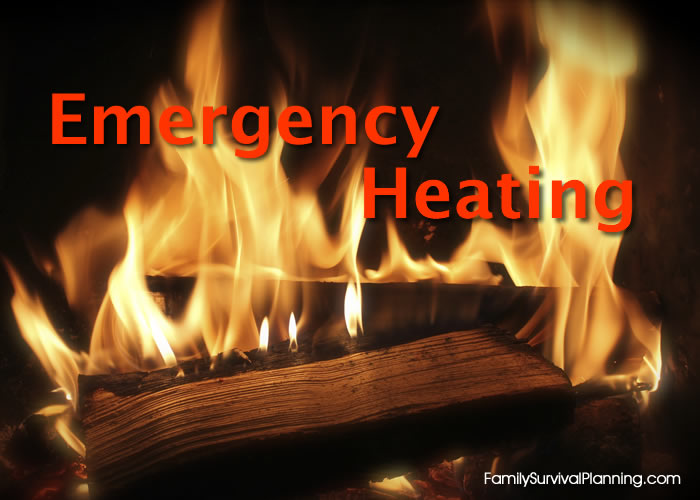- HOME
- Survival Gear
- Survival Gear Backup
Using Survival Gear For Backup When an Appliance Fails
Can you think of a more important appliance than a refrigerator/freezer in these modern times? I can't.
This week, our 15 year old refrigerator/freezer failed us. This is the second time within a month. The first time was the capacitor and the second time was the compressor itself - the heart of the machine. Fair warning: If the capacitor quits on your refrigerator, chances are pretty good that the compressor will be next in short order (advice from the repairman).
Invest in emergency food storage now and enjoy peace of mind for the next 25 years. Don't miss out on the savings!
Planned obsolescence?
Just an aside from the prepper subject, the repairman stated that, in his experience, newer appliances are failing more often than older appliances. He said that he repairs appliances that are 3-5 years old more often than older appliances (10-15 year's old).
In the article America’s Concealed Crisis: Fifty Years of Economic Decline, 1969 to 2019, Charles Hugh Smith explains:
Appliances were once designed and built to last a generation or longer. Refrigerators, washers and dryers lasted for decades. Now the average appliance fails within a few years, and the electronic board–costing roughly a third of the entire appliance price–fails and must be replaced. With labor, the cost of the repair is so high, consumers often send the almost-new appliance to the landfill and buy a new (and soon to fail) appliance.
Net-net, low quality reduces purchasing power even if price has declined. (source)
Even though the cost of the repair was by no means cheap, we calculated that we bought another 12-15 years on our old, reliable refrigerator, saving us thousands in the purchase of a new one (maybe more than once in the next 12-15 years).
How to Save Your Food
So what do we do with all the frozen foods, as well as the milk, cream, cheese, eggs, mayonnaise, leftover chicken and more?
Well, luckily, we have another freezer in the basement so we transferred all frozen foods to that freezer.
Our Backup Survival Gear
The repairman said it would take at least 24 hours to acquire the parts needed to fix it. So what could we do to save the foods that needed refrigeration right now?
Here's what we did - let me explain.
Two years ago we determined to become as prepared as we could possibly afford in the event of a complete and long term power outage. So we purchased a solar generator, including two extra batteries and two extra solar panels.
After setting it up (read about our total house set up here) and with it fully charged, we tested every appliance in our home to see how many we could use and for how long if we had no electricity. We tested the refrigerator, the freezer, grain mill, microwave, light fixtures, fans (for cooling), Excalibur dehydrator, coffee maker, crock pot, Bosch mixer - well, everything we could possiby need in an extended blackout.
What we learned was that we could never sustain an electricity-hungry refrigerator for more than an hour or two. Our small freezer in the basement could be sustained longer than the refrigerator.
So we set out to find something that could be used to keep foods cool enough not to spoil. Keeping them frozen was out of the question (which is why it's good to store canned and freeze-dried foods).
Scouring Amazon, we found an appliance called a Koolatron. (I know, it sounds like something similar to a megatron or something scientific.)
It's really a very simple cooler/heater! Here's how it works:
- Cools to 40°F below the outside temperature. The room temperature in our kitchen was 75 degrees, so the inside temperature of the Koolatron was 35 degrees - perfect for milk, etc.
- State-of-the-art thermoelectric cooling technology. All you hear is a fan - it's very quiet.
- Reverse the power cord to turn the cooler into a warmer. Isn't that awesome? Just turn the power cord over and it becomes a warmer to keep your food warm. Just make sure it's plugged in for the cool side for refrigeration.
It can be used in the car, at a campsite, or at a tailgate, and is designed to hold an incredible amount of food and drink. Ours is a 52 quart size (that's a lot of soda pop cans!).
It can also be used vertically, like a refrigerator, or horizontally, like a regular cooler.
It plugs into your car's 12 volt outlet and can be used either vertically or horizontally. We have a converter so in this case, still having electricity, we were able to use the converter and plug the cooler into a regular 120 volt electrical socket. It also uses the 12 volt receptor in the solar generator.
So having the Koolatron in our survival gear, we were able to save our food from spoilage and it definitely passed the emergency refrigeration test. Believe me, we are very glad to have this great appliance in our survival gear ready to use when we need it.

















